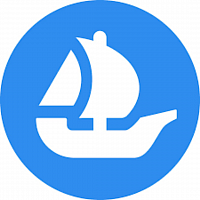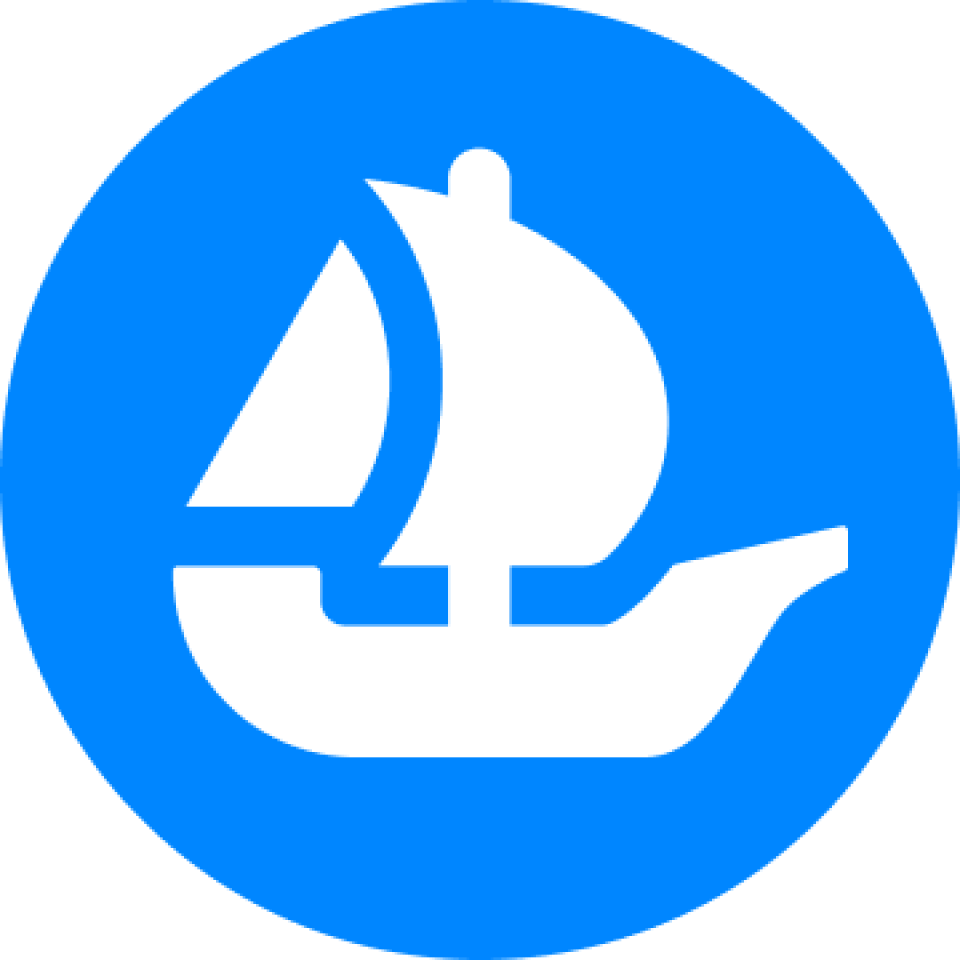Welcome to OpenSea support! We're here to assist you live with any questions, issues, or troubleshooting you need help with.
NFT 101
Learn about NFTs, web3, and more.
What is an NFT
An NFT (non-fungible token) is a unique digital item stored on a blockchain. NFTs can represent almost anything, and serve as a digital record of ownership.
How do NFTs work?
NFTs operate on blockchain technology. The blockchain is basically a large, digital, public record. The most popular blockchains are distributed across many nodes (read: people’s computers), which is why you’ll hear them described as “decentralized.”
So instead of a central company-owned server, the blockchain is distributed across a peer-to-peer network. Not only does this ensure that the blockchain remains immutable, it also allows the node operators to earn money, instead of a single company. Because the blockchain records and preserves history, it is uniquely positioned to transform provable authenticity and digital ownership.
When someone creates, transfers, buys, sells, or otherwise does something with an NFT, that all gets recorded on the blockchain. This is what enables authentication.
This record serves as a permanent statement of authenticity that can be viewed or accessed by anyone. Today, when you buy a piece of art or a collector's item, it typically comes with a paper certificate of authenticity, which you must then keep track of forever. It is easily forgotten, lost or destroyed, creating a very fragile system for authenticity. Blockchain’s offer a simple and more secure solution to this long standing issue of proving authenticity.
Let’s say you want to buy a piece of artwork from Tyler Hobbs. With NFTs, you can see the entire history of that piece, all the past owners, every sale, all the way back to Hobbs’ original creation of the piece. Without NFTs, you wouldn’t know if you were buying the real piece or just a really good fake.
NFTs can establish which items are authentic and which are not.The impact of NFT technology
Blockchain technology is revolutionary for digital items. With NFTs, digital items can be provably scarce, openly transferable, and have authenticated ownership. But you might be thinking…so what?
For creators, these new attributes are incredibly powerful. Instead of distributing their artwork, music, or other creations on platforms that are traditionally hard to monetize, they’re able to sell unique and authenticated items on a blockchain-based marketplace. In addition to the initial sales, NFT creators may receive set creator earnings on secondary sales. For example, a developer could make an in-game skin that can be used across a variety of games and has established authenticity and ownership, and that developer may earn money other times that skin is bought or sold.
This technology is revolutionary for collectors, too. Imagine you’re about to buy a concert ticket online— with NFTs, you can trust its authenticity, because of the undisputed blockchain history, instead of relying on the reseller’s word.
What are NFTs used for?
An NFT can represent anything, but let’s explore some of the ways NFTs are being used today, and potential implementations for the future.
How to buy an NFT
What do you need in order to buy an NFT?
To buy NFTs, you’ll need to set up a crypto wallet. A crypto wallet is a program that stores your NFTs and cryptocurrency.
There are custodial (“hosted”) wallets and non-custodial wallets. Custodial wallets are managed by a third party company, whereas a non-custodial wallet is not. Custodial wallets are like keeping your valuables in a storage facility, and non-custodial wallets are like keeping them in your safe at home. Custodial wallets therefore require less responsibility, but have risks related to the third party (like, if the storage facility was robbed). Non-custodial wallets give you full control, but also mean you have to be extra careful (like, not losing your key or accidentally throwing away something valuable when you reorganize your closet).
Non-custodial wallets include software and hardware wallets.
A software wallet is a program that lives on your computer or on your internet browser. This makes software wallets a great option for quickly and conveniently buying, selling, and transferring NFTs and cryptocurrency.
A hardware wallet is a physical device that you plug into your computer to use. Because it’s not always connected to your computer or browser, it’s a great option for long-term secure storage, but is a bit less convenient for fast or frequent transactions.
Different wallets support different blockchains, and not all wallets support NFTs. Here are some wallets compatible with OpenSea:
Metamask (Ethereum, Polygon, Klaytn)Coinbase Wallet (Ethereum, Polygon, Klaytn)See the full list of compatible wallets
NFT transactions happen using cryptocurrency, although many NFTs on OpenSea are available to buy with a credit or debit card.
What is minting?
“Minting” an NFT is the process of writing a digital item to the blockchain. This establishes its immutable record of authenticity and ownership. When you mint an NFT from a project, you’re the first ever owner of that NFT, since the mint is when it’s written to the blockchain.
As a creator, minting your work allows you to establish provable scarcity and verified ownership. For the first time, creators can publish limited edition digital works, whose authenticity is validated on the blockchain. Ownership is undisputed and public, allowing creators to build special communities and perks for those who hold their NFTs.
Minting NFTs isn’t just for creators, however. NFT projects will often offer early access to their NFTs via a mint. When you mint an NFT from a project, you’re the first ever owner of that NFT, since the mint is when it’s written to the blockchain.
Step 1: Decide where to buy your NFT
There are two main ways to buy NFTs: on independent project websites, or on NFT marketplaces.
Projects will sometimes set up their own websites to sell their NFTs. This is often for a project’s “mint” (the very first sale, when the NFT is written to the blockchain), although some projects have their own independent marketplace, like Coachella and Larva Labs. In most cases, when you buy from a project website, you can still resell your NFT on other NFT marketplaces.
Step 2: Find an NFT you like
If you want to get into NFTs but don’t know how to find something you like, here are some good places to start exploring:
Creators you already follow
Many “traditional” creators are also active in the NFT space, like Snoop Dogg, Damien Hirst, and Gary Vee. You can check out some of your favorite creators and see if they have any cool NFT projects, like this interactive music project by SiA.
Much of the conversation around NFTs happens on Twitter, making it a great place to discover new NFT projects. You can follow accounts, hashtags, and topics that you’re interested in. It’s a great way to not only see what’s currently trending, but also to see what projects are coming soon.
Marketplaces
NFT marketplaces are another great place to discover NFTs. On OpenSea, you can look at “Trending” charts, explore by category, and more. You can also sort and filter by criteria like price, making it easier to find the types of projects you’re looking for.
Step 3: Purchase your NFT
Once you’ve found an NFT you like, how do you actually purchase it? You can buy NFTs for a fixed price or you can buy them in auctions.
Buy now
NFTs listed to “buy now” are listed at a set price. They can be purchased any time during the sale period and without any additional involvement from the seller if the sellers sales portal is active . This is the simplest method, and is a lot like buying on other e-commerce websites.
What is minting?
What does it mean to mint an NFT?
Minting an NFT refers to the process of writing a digital item to the blockchain. This establishes its immutable record of authenticity and ownership. This process usually involves things like assigning metadata to the NFT, which can include information about the creator, a description of the content, and other relevant details. Minting establishes ownership and provenance of the digital item on the blockchain, ensuring its uniqueness and authenticity.
Both creators and collectors can mint NFTs. For both creators and collectors, minting NFTs establishes verified ownership and ownership history. For creators, minting their own NFTs gives them ownership and control of their own work, and allows them to build special communities and perks for those who hold their NFTs. When either the creator or a collector mints an NFT from a project, they become the first-ever owner of that NFT, since the NFT is written onto the blockchain during the mint.
What is the purpose of minting?
You may have heard people ask, “Why can’t I just screenshot an NFT?” Minting is part of the answer. When you mint an NFT, it becomes stored on the blockchain, where its authenticity and ownership is established. And because the blockchain record can’t be edited, minting is the start of that NFT’s immutable history.
Minting for creators
As a creator, minting your work allows you to establish provable scarcity and verified ownership. For the first time, creators can publish limited edition digital works, whose authenticity is validated on the blockchain. Ownership is undisputed and public, allowing creators to build special communities and perks for those who hold their NFTs.
Minting for collectors
Minting NFTs isn’t just for creators, however. NFT projects will often offer early access to their NFTs via a mint. When you mint an NFT from a project, you’re the first ever owner of that NFT, since the mint is when it’s written to the blockchain. Oftentimes, participating in a project’s mint is like buying a pack of Pokémon cards: you don’t know if you’ll end up with something rare.
How to create an NFT
What is an NFT?
Before we dive into the mechanics of creating an NFT, let’s review what non-fungible tokens are. An NFT (non-fungible token) is a unique digital item stored on a blockchain. NFTs can represent almost anything, from art, to memberships, to in-game items, and serve as a digital record of ownership.
NFTs operate on blockchain technology. The blockchain is basically a large, digital, public record. The most popular blockchains are distributed across many nodes (read: people’s computers), which is why you’ll hear them described as “decentralized.”
OpenSea is compatible with the following blockchains:
Ethereum is a decentralized, open-source Layer 1 blockchain with smart contract functionality. Its native cryptocurrency is Ether (ETH), and it’s the largest blockchain for NFTs.
Polygon is an EVM-compatible Ethereum sidechain that uses the Proof-of-Stake method of validation. This means Polygon is its own blockchain, but it benefits from and is compatible with Ethereum in a few important ways. Polygon’s native token is MATIC. In 2022, Polygon pledged to go carbon neutral.
Arbitrum is an EVM-compatible Layer 2 blockchain that was designed to help Ethereum scale. OpenSea is compatible with the Arbitrum chain Arbitrum One, which features rapid and inexpensive transactions and uses the Ethereum base chain for security.
Optimism is a layer two blockchain designed to help Ethereum scale. Optimism’s EVM-equivalent architecture is designed to enable Ethereum apps to take advantage of the chain’s cheaper and faster transactions without technical barriers. The Optimism Token (OP) is used as a governance tool and it is not required to use Optimism or pay for gas fees.
Klaytn is an open-source, public Layer 1 blockchain focused on the metaverse, gaming, and creator economy. Klaytn’s native token is KLAY. OpenSea supports Kaikas, a wallet browser extension to buy and sell Klaytn NFTs.






